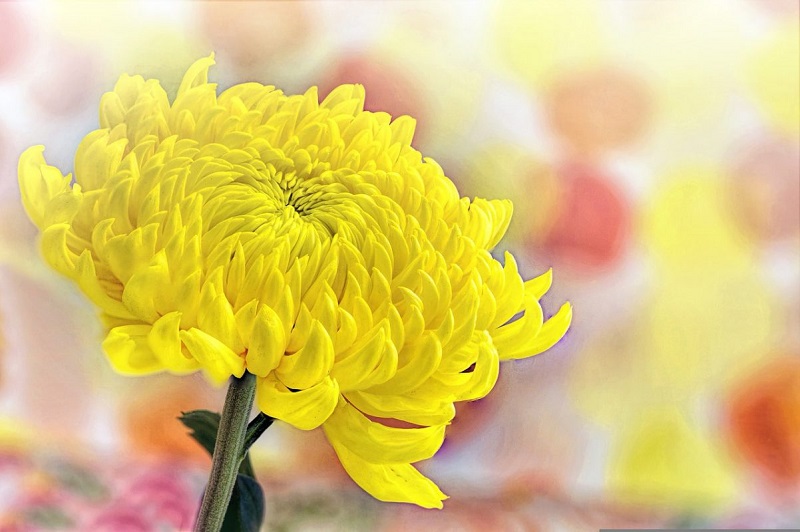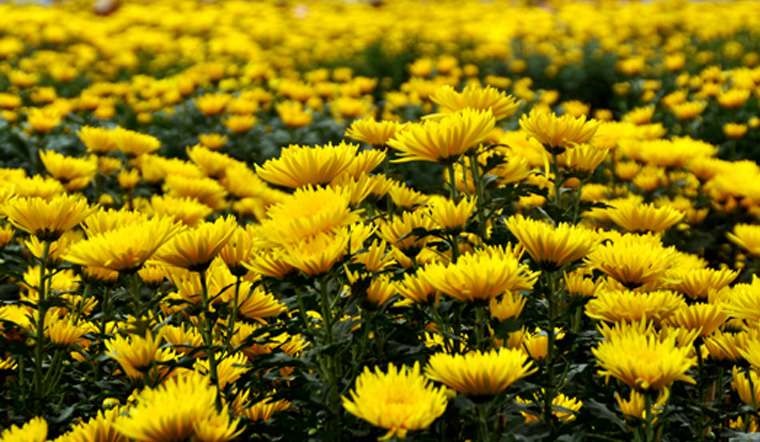Yellow daisies, with their bright, cheerful blooms, capture the essence of sunshine in floral form. These vibrant flowers, known for their simplicity and elegance, have charmed gardeners, artists, and poets alike. Their warm yellow petals and sunny disposition make them a popular choice in gardens and floral arrangements. This article explores the botanical characteristics, cultural significance, uses, and care of yellow daisies, shedding light on why these flowers hold a special place in our hearts and gardens.
Botanical Characteristics
Scientific Classification
Yellow daisies belong to the Asteraceae family, a diverse group of flowering plants. The most common species, Bellis perennis, is often referred to as the common daisy, though yellow varieties can be found in various genera within the Asteraceae family. Their classification reflects their close relation to other daisy-like flowers and their role in the broader ecosystem.

Physical Description
Yellow daisies are characterized by their distinctive flower structure. They typically feature a central disc surrounded by a ring of yellow ray florets, which are the familiar petal-like structures. The vivid yellow color can vary slightly, ranging from soft pastel hues to bright, intense shades. The leaves are generally green, lance-shaped, and can vary in texture depending on the species.
Growth Conditions
These flowers thrive in a range of climates, but they generally prefer temperate conditions. Yellow daisies grow best in well-drained soil with ample sunlight. They are relatively low-maintenance and can adapt to different soil types, though they flourish in loamy, slightly acidic soils. Regular watering is important, especially during dry spells, but overwatering should be avoided to prevent root rot.
Lifecycle
Yellow daisies undergo a straightforward lifecycle. They start from seeds, which germinate within a few weeks under the right conditions. As seedlings, they grow rapidly, eventually producing their first blooms within a few months. The flowering period typically lasts through the spring and summer, with the plants producing seeds for the next generation.
Cultural and Symbolic Significance
Symbolism
In many cultures, yellow daisies symbolize innocence, purity, and new beginnings. Their bright color and simple form convey a sense of joy and optimism. In some traditions, they are associated with positive changes and fresh starts, making them a popular choice for celebrations and new ventures.
Uses in Art and Literature
Yellow daisies have been featured in various art forms. Their cheerful appearance has inspired countless paintings and poems. For instance, Vincent van Gogh’s vibrant works often include daisy-like flowers, capturing their lively spirit. In literature, yellow daisies often symbolize happiness and a fresh outlook on life, reflecting their role as symbols of positivity.
Role in Festivals and Traditions
In certain festivals and traditions, yellow daisies are celebrated for their beauty and symbolism. They are used in floral arrangements during events such as weddings and harvest festivals, adding a touch of brightness and festivity. Their presence in these settings underscores their role in marking joyful occasions and transitions.
Uses and Benefits
Ornamental Uses
Yellow daisies are widely used in gardening and landscaping due to their striking appearance and ease of care. They make excellent additions to flower beds, borders, and container gardens. Their bright blooms can complement a variety of garden styles, from cottage gardens to modern landscapes.
Medicinal and Practical Uses
In traditional herbal medicine, yellow daisies have been used for their purported soothing properties. Although not commonly used in modern medicine, their historical applications include treatments for minor ailments and as a mild diuretic. However, it is essential to consult a healthcare professional before using any plant medicinally.
Environmental Benefits
Yellow daisies play a role in supporting local ecosystems. They attract pollinators such as bees and butterflies, which are crucial for the health of gardens and natural habitats. Additionally, their roots help to stabilize soil and prevent erosion, contributing to overall soil health.

Care and Maintenance
Planting Tips
When planting yellow daisies, prepare the soil by ensuring good drainage and mixing in organic matter if necessary. Space the plants appropriately to allow for their growth and avoid overcrowding. Planting in a sunny location will help the daisies thrive and produce abundant blooms.
Ongoing Care
Regular watering is crucial, particularly during dry periods. Fertilize the plants with a balanced fertilizer to encourage healthy growth and blooming. Watch for pests such as aphids or fungal diseases, and take appropriate measures to manage these issues as they arise.
Seasonal Considerations
In colder climates, prepare yellow daisies for winter by cutting back the plants and applying mulch to protect the roots. In warmer climates, ensure the plants receive adequate water and consider periodic pruning to maintain their shape and vigor.
Yellow daisies embody the essence of joy and simplicity, offering beauty and positivity wherever they bloom. Their vibrant petals and easy care make them a beloved choice for gardens and floral arrangements. Understanding their botanical characteristics, cultural significance, and care requirements enhances our appreciation for these delightful flowers. Whether brightening a garden or symbolizing new beginnings, yellow daisies continue to enchant and inspire, reminding us of the beauty in life’s simple pleasures.
